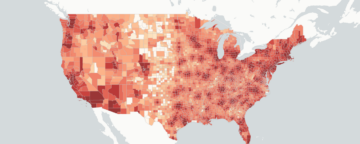
Abstract
Importance: Adolescent drivers have the highest rate of motor vehicle crashes, and among equally novice drivers, crash risk is inversely age graded. Working memory (WM), crucial to driving hazard awareness, is also age graded, with ongoing development into late adolescence. Variability in WM capacity and growth trajectory positions WM as a candidate crash risk factor for study, clinical screening, and possible preventative intervention.
Objective: To test the association between crashes and differential WM development.
Design, Setting, and Participants: This prospective cohort study used data from a longitudinal cohort of 118 community youth in Philadelphia, Pennsylvania. Working memory and other risk factors were measured annually from age 11 to 13 years (prelicensure, in 2005) to 14 to 16 years (in 2009), and again at 18 to 20 years (in 2013). In 2015, a follow-up survey of driving experience identified 84 participants who had started driving. Latent growth curve modeling was used to examine the association between variability in the baseline (intercept) and developmental trajectory (slope) of WM and the crash outcome.
Main Outcomes and Measures: Self-reported crashes were the primary outcome. Variability in the relative growth of WM development along with traits and behaviors associated with risky driving were assessed.
Results: Of 84 participants (39 [46%] male; mean [SD] age, 20.46 [1.09] years), 25 (29.8%) reported they had been involved in at least 1 crash. Controlling for other crash risk factors, the model indicated that variation in the linear slope of WM growth was inversely associated with reporting a crash (b = −6.41; SE = 2.64; P = .02). Crashes were also associated with reckless driving behavior (b = 0.40; SE = 0.18; P = .03). Variation in the intercept of WM was not associated with crashes (b = −0.245; SE = 0.67; P = .72).
Conclusions and Relevance: The results suggest that a relatively slower WM growth trajectory is associated with young driver crashes. Routine assessment of WM across adolescence may help to identify at-risk teen drivers and opportunities for providing adaptive interventions (eg, driving aids or training) that can address limitations in WM-related skills that are critical for safe driving.
Authors
- Elizabeth A. Walshe
- Flaura K. Winston
- Laura M. Betancourt
- Atika Khurana
- Kristin Arena
- Daniel Romer

